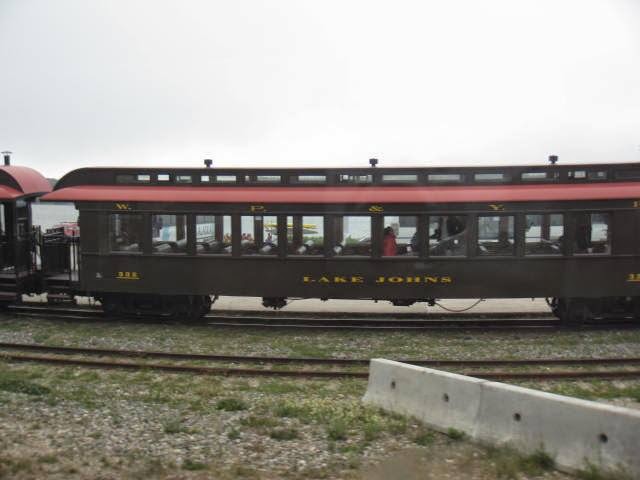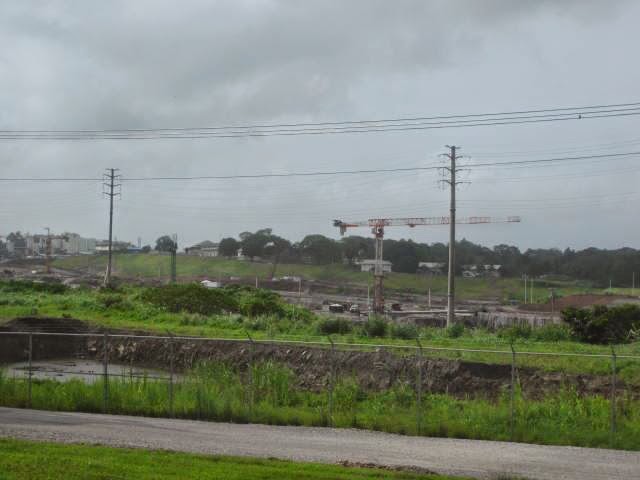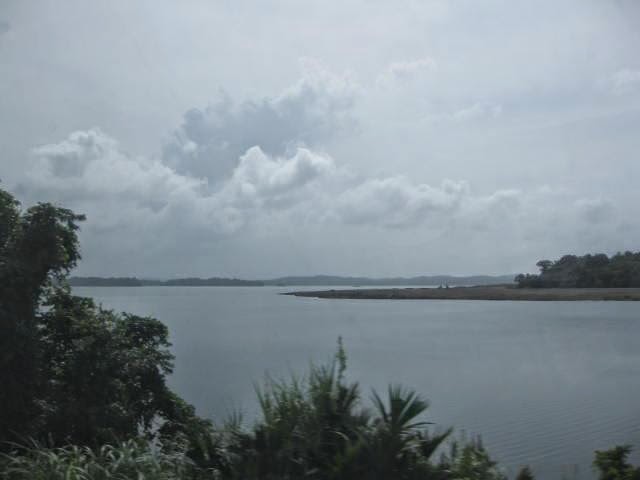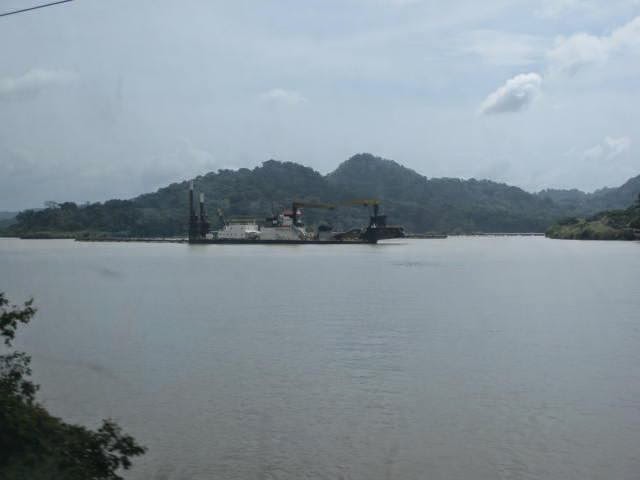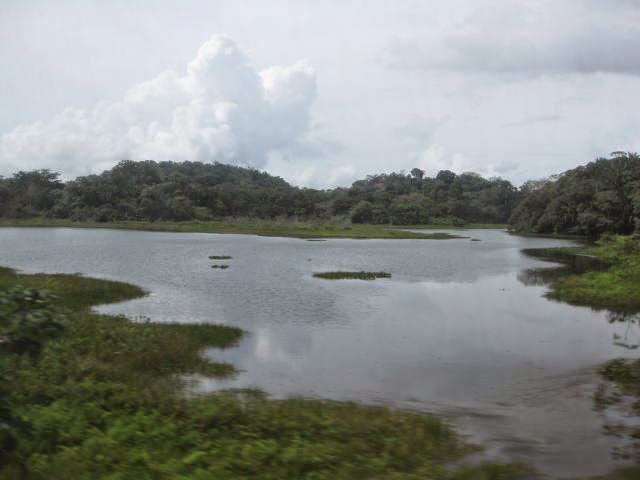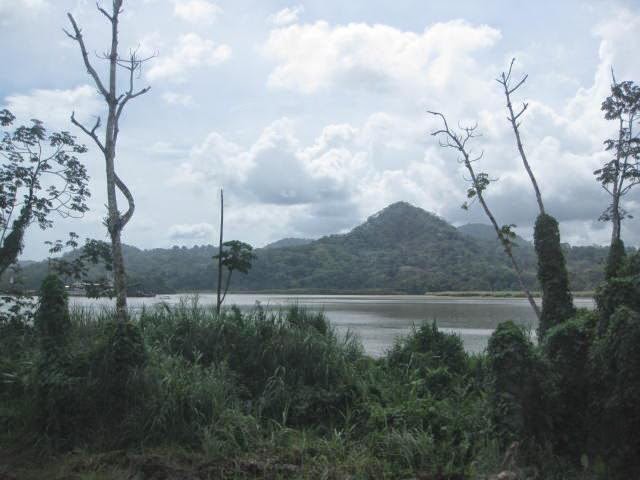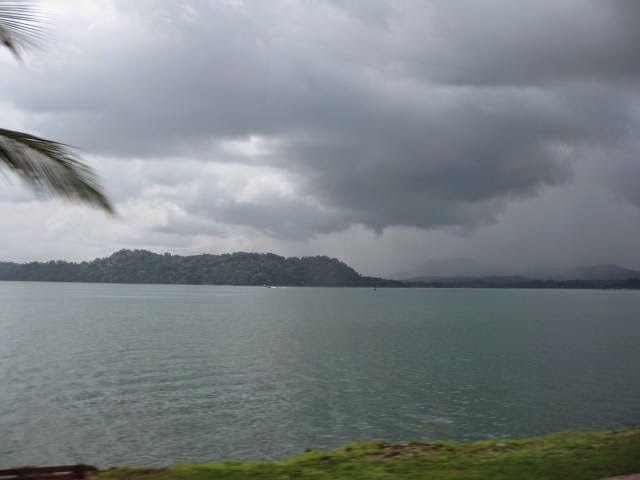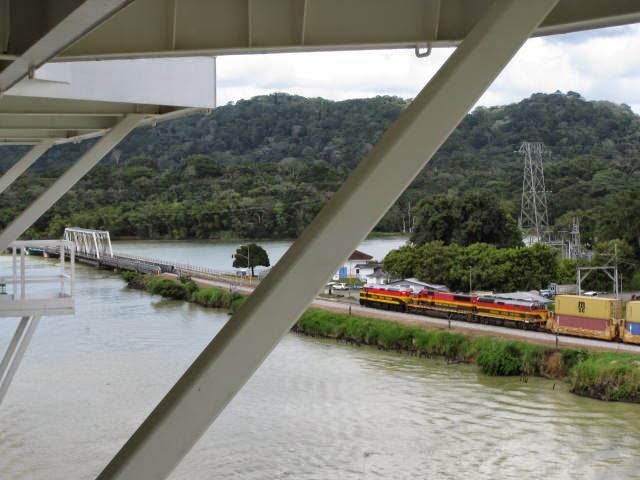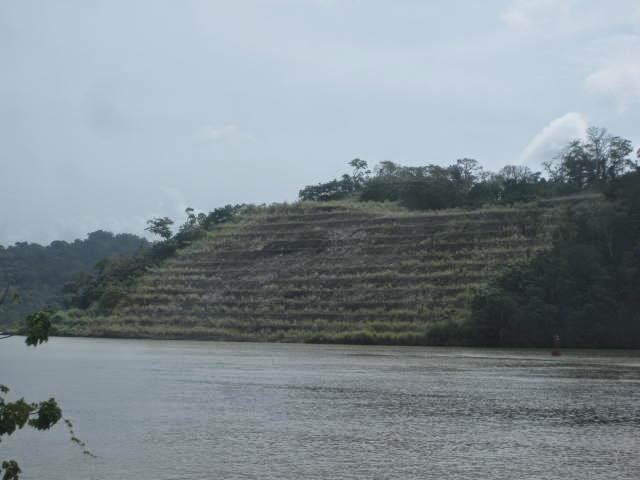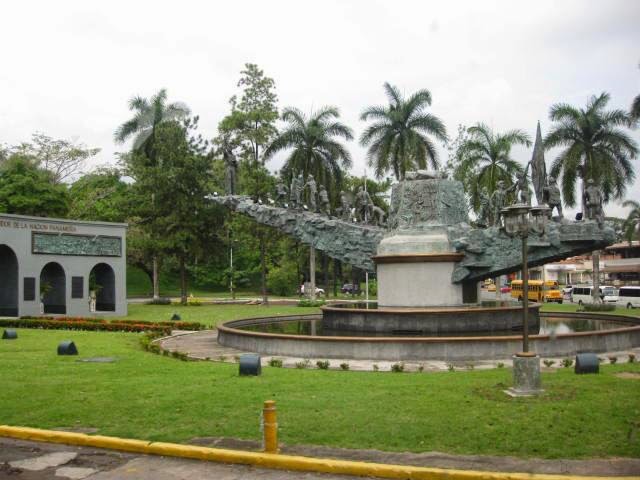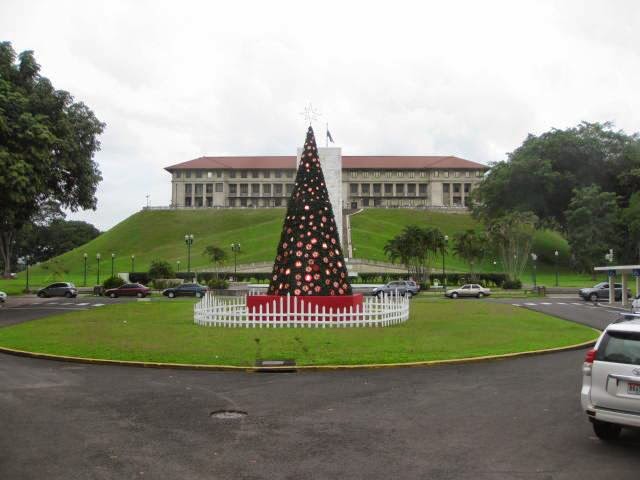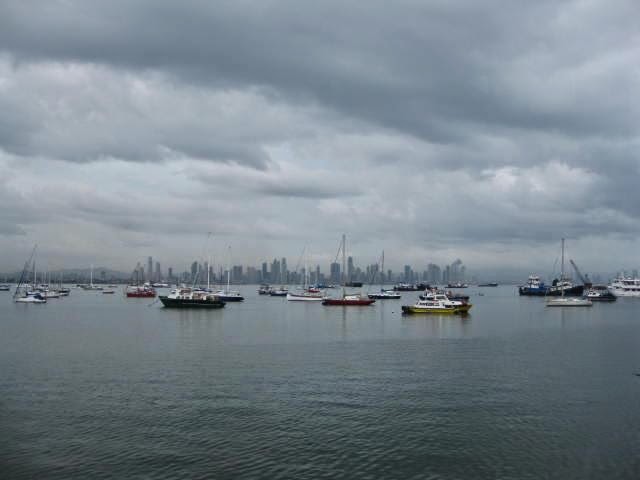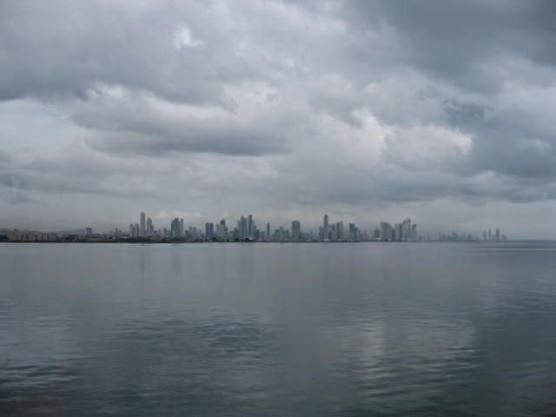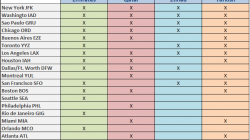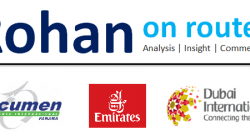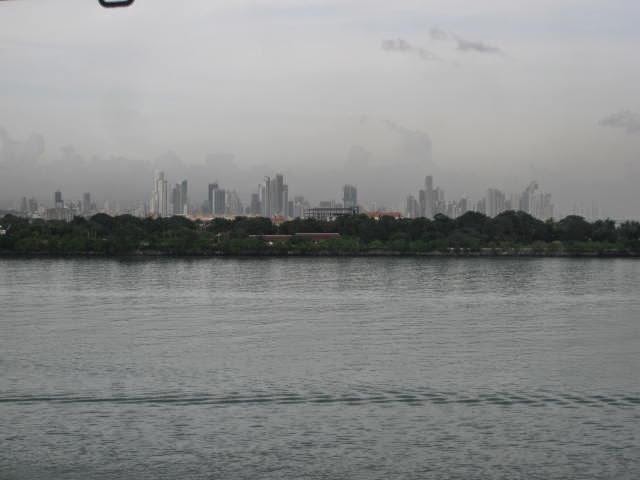
Welcome to Part 2 of my report on our cruise to South America in December of 2012. Our second port, on the 5th day of our cruise, was Colon, Panama, and today’s report will cover our tour of the historic Panama Canal Railway and Panama City. Incidentally, this is the second time I’ve been to Limon. We took a Panama Canal cruise in December, 2005 that also stopped here, but the ship didn’t go all the way through the canal. We took a smaller boat through the canal to Panama City instead.
For a general overview of our trip and the trip report index, click here.
NOTE: If you’re looking for a report on the canal itself, you’ll have to wait until the next installment, which will include a photo essay of our crossing of the canal on the Celebrity Infinity.
Date of Visit: Tuesday, December 11, 2012
This doubled as my dad’s 70th birthday, and as the first generation world traveler in our family, he was happy to be on both a cruise ship and train (his favorite modes of transport) on the same day. We didn’t realize it at the time, but this would be the last birthday we would share together, which in hindsight, makes this day seem even more special. So, this trip report is dedicated to you, dad.
Colon is an altogether unremarkable town. Logistically, Colon is a very important port, being the site of both the Caribbean Sea entrance to the Panama Canal via the Gatun Locks, and the Panama Free Trade Zone. All of that adds up a rather dismal industrial backdrop (and in fact, cruise lines constantly warn passengers not to stray into town alone, especially after dark). However, it is a convenient jumping off point for tours to Panama City, and the historic Panama Canal Railway, whose eastern depot is located here.
The train is run by the Panama Canal Railway Company, originally established in 1855 to carry gold and wood across Panama so that they could then be shipped elsewhere, and also to transfer shipments from the Atlantic to Pacific side of the continent without having to go around South America.
Today, it is primarily a freight railroad, but also manages tourist trains that run to the east end of Panama City, especially for the numerous cruise lines that visit Panama. Numerous tour companies sell tours including trips on the railroad, but we booked ours through Celebrity Cruises. For more information about freight and shipments, see here.
Because of the way the train depot is set up in Limon, it wasn’t possible to get a good shot of the train, but it looked very similar to this one that we rode in Alaska.
Shortly after departing the depot, you get a brief view of the construction zone where the canal is being widened. The canal has been a victim of its own success of sorts; some ships are now too large to transit through the canal’s locks. The widening project will solve that problem.
Shortly after leaving Colon, we passed by Gatun Lake, an artificial lake created by the original construction of the canal. Although it may not look like it, the lake plays a crucial rule in the operation of the canal, as water is alternately drawn and released to the lake to operate both the Gatun locks (the first set of locks on the Caribbean Sea end of the canal) and the Pedro Miguel locks, at the west end of Gatun Lake. Without the lake, the canal wouldn’t be able to operate.
Despite the low overcast, and the dense jungle hugging the tracks, some decent views of the lake appeared from time to time.
If you’re wondering how the train crossing this area will look to someone watching from a ship, here’s a sample, taken the next day from our balcony while crossing the canal in the cruise ship.
A little later, passing through the Culebra Cut, where the canal cuts through the continental divide, we pass by what I first thought was a construction zone of some sort. I realized later that this was an example of “step farming” on the hillside. What they were growing, though, I don’t know.
The entire journey takes about 2 hours, and ends just past the Miraflores locks, in the eastern outskirts of Panama City. There, we boarded a couple of buses for a brief tour of the city before turning around and heading back to the ship. The first thing of significance we passed was a square with some kind of military monument.
We then traveled to the canal administration area, where a Christmas tree (a much better one than the one we saw in Cartagena the day before) had been put up in front of the main administration building.
Any cruise line-sponsored shore excursion must include the obligatory shopping stop for guests to pay the local tourist tax, and this trip was no exception. This time, we were taken to an area called the Flamenco Marina, which houses both a marina and an “outlet mall” of sorts containing a variety of small shops and restaurants. For junk hunters, this mall actually did have a couple of pretty decent spots for that, with a couple of shops selling cheap Panama t-shirts for 3 for $10.
Meanwhile, the Marina does provide for a nice view of downtown Panama City in the distance (no sign of Eddie Van Halen or David Lee Roth, however).
After snapping these photos and buying a few cheap t-shirts, it was time to head back. Unfortunately, such is life with cruising – since you’re usually only in port for about 8 hours, there’s not enough time to explore a place in-depth. In particular, I wanted to see the city’s colonial Casco Viejo neighborhood, but maybe next time. Originally, this tour was supposed to consist of the train ride to Panama City and a bus ride back, but for some unexplained reason (“unexplained reason” would turn out to be a recurring theme on this trip, as it turned out), we were told that we’d be taking the train back to Colon as well. No great shakes, though as a road trip/transportation geek, I was hoping to check out the new “Corredor Norte” toll road from Panama City to Colon. The scenery was really no different from the way down, so I’ll end the report here.
If you’d like to read more about Panama City itself, The New York Times has an excellent article detailing things to see and do if you only have 36 hours to see the place. I highly recommend reading this before planning your trip.
Miscellaneous Things to Know – Panama
Currency: Technically the official currency of Panama is the “balboa”, but its exchange rate is fixed at par with the U.S. dollar. Virtually everyone in Panama will accept USD, and it’s not unusual to receive change in both balboas and USD. Credit cards are widely accepted.
Climate: Think South Florida on steroids. It is very hot and humid, with a long rainy season, from May to January. Carry plenty of water and mosquito repellent if you are planning on being out and about.
Language: Spanish is the official language, though English is more widely spoken than most Latin American countries. It does help to know a little Spanish, or to carry a Spanish phrasebook, if you plan to explore less touristy areas of the city.
Transportation: Panama City has a very good international airport, with Copa Airlines (a subsidiary of United) the country’s flag carrier. I flew Copa on our way back from Santiago, and the service is very good, with low fares especially in first class (beware – it is like domestic first class on U.S. airlines, not the lie-flat seats you see on flights to Europe or Asia). Flight time from Dallas or Houston to Panama City is approximately 4 hours.
As far as getting around Panama City itself, taxis are plentiful and dirt cheap, generally less than $5 to any destination within the city, so that’s probably the way to go if you want to explore the city. As in any developing country, confirm and/or negotiate the fare with the driver BEFORE getting inside. Be aware that if you plan to get out and walk, the city’s street system is poorly marked, with streets that often change directions or end abruptly. The haphazard street network, along with high levels of traffic congestion, also means that I strongly discourage attempting to drive within the city. The city’s bus system is notoriously haphazard and unsafe, and is not recommended, especially since taxis are so cheap.
If you are visiting by cruise ship or taking a one-way rail journey to or from Colon, I have heard that taxi fare to Colon runs about $60, but have not confirmed that personally. Speaking of the railway, you can’t book tickets directly with the Panama Canal Railway; these have to be purchased through an excursion company or through the cruise line. Our tickets via the cruise line in the domed car were $129 apiece back in 2012.
Click here for more information on getting around Panama City.
Food: I’ve never actually had a chance to try Panamanian cuisine, but it’s a cross between Mexican and northern South American cuisines. The local specialty is supposed to be gallo pinto, a mix of rice, beans, and pork. Remember, this is still a developing country, so use caution when eating at street vendors.


